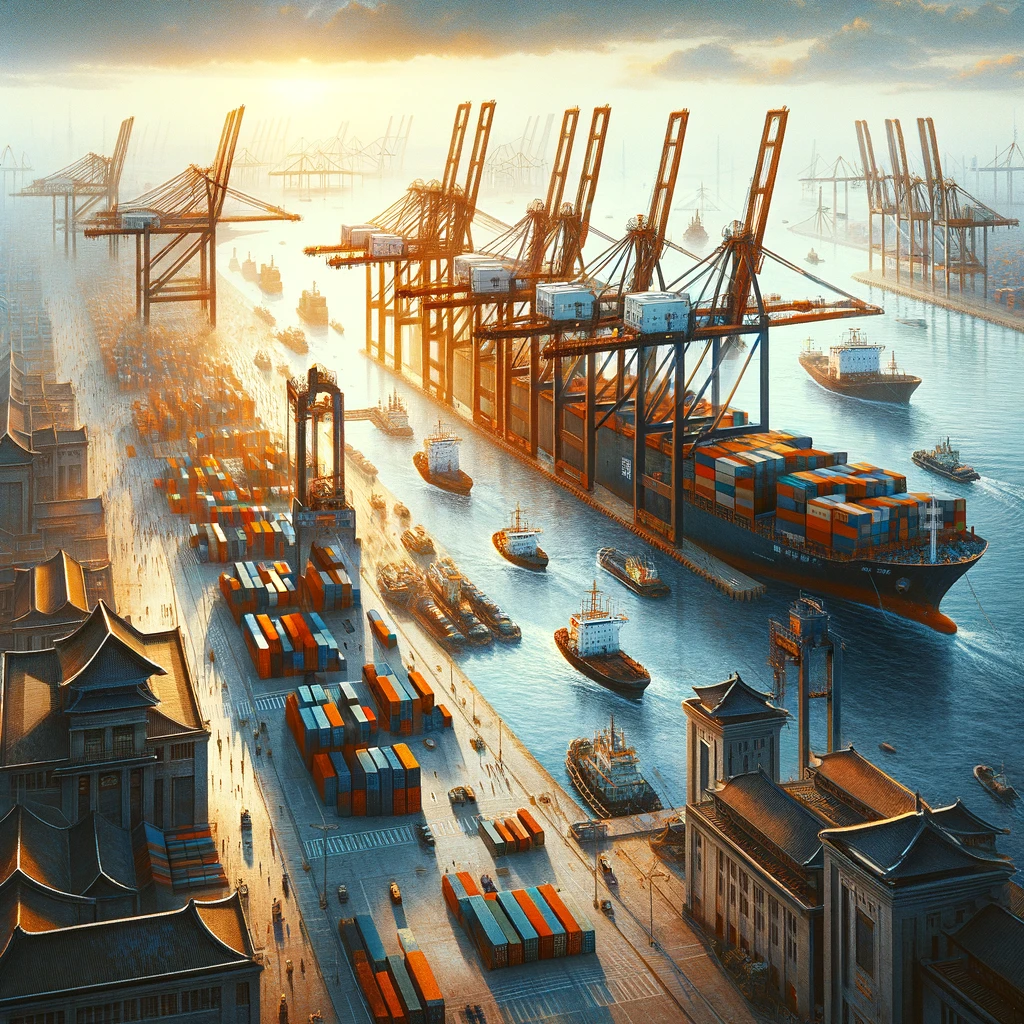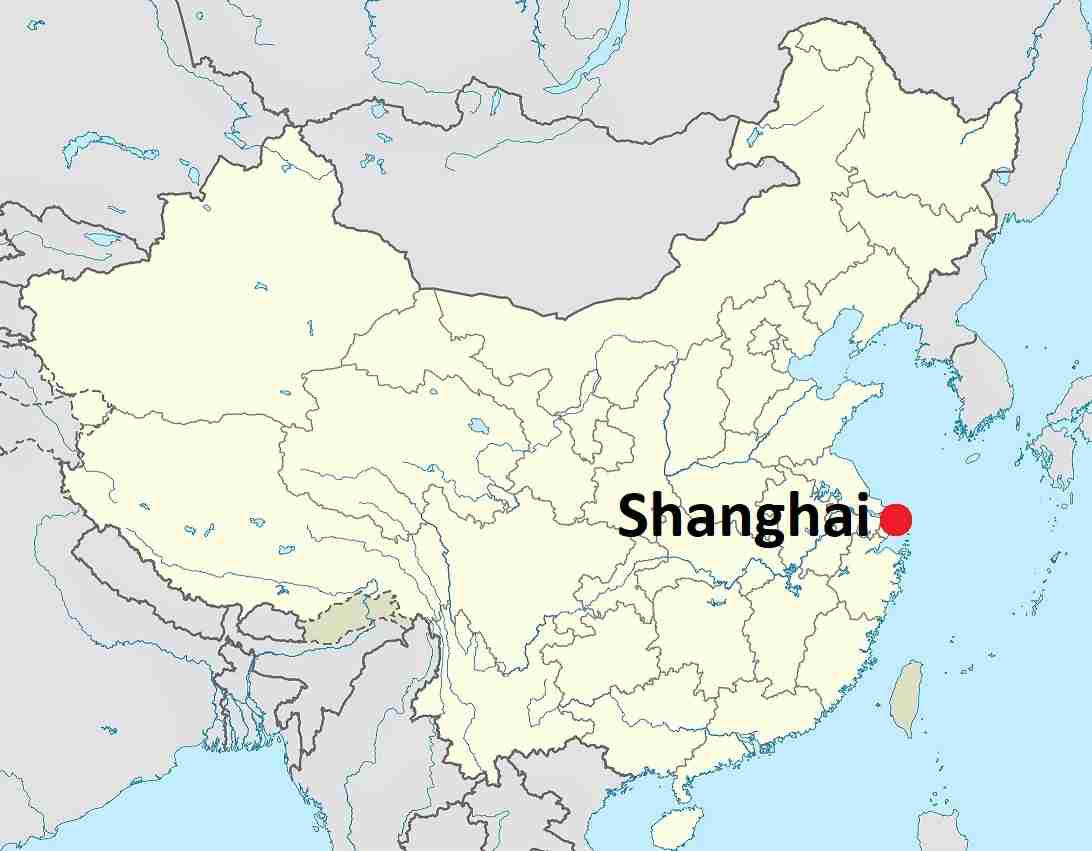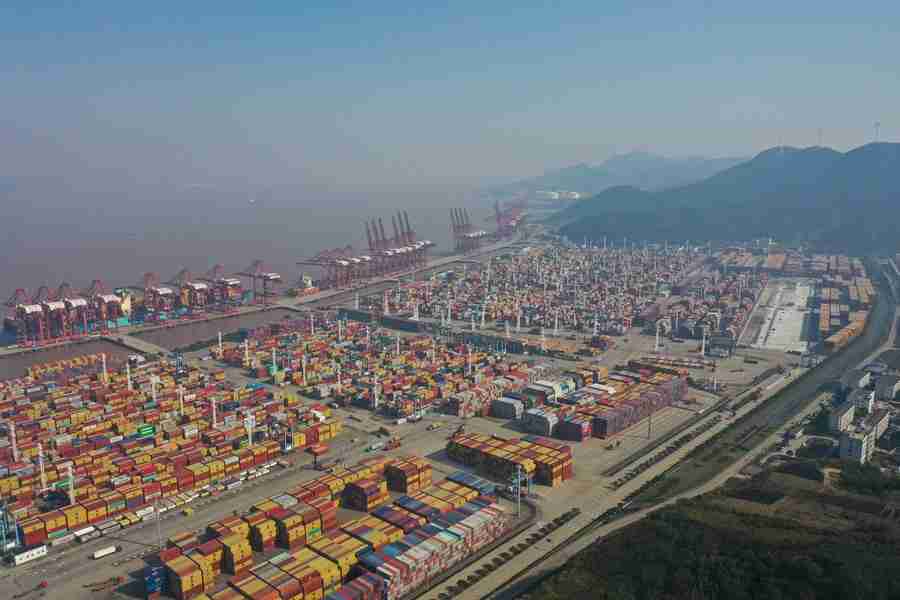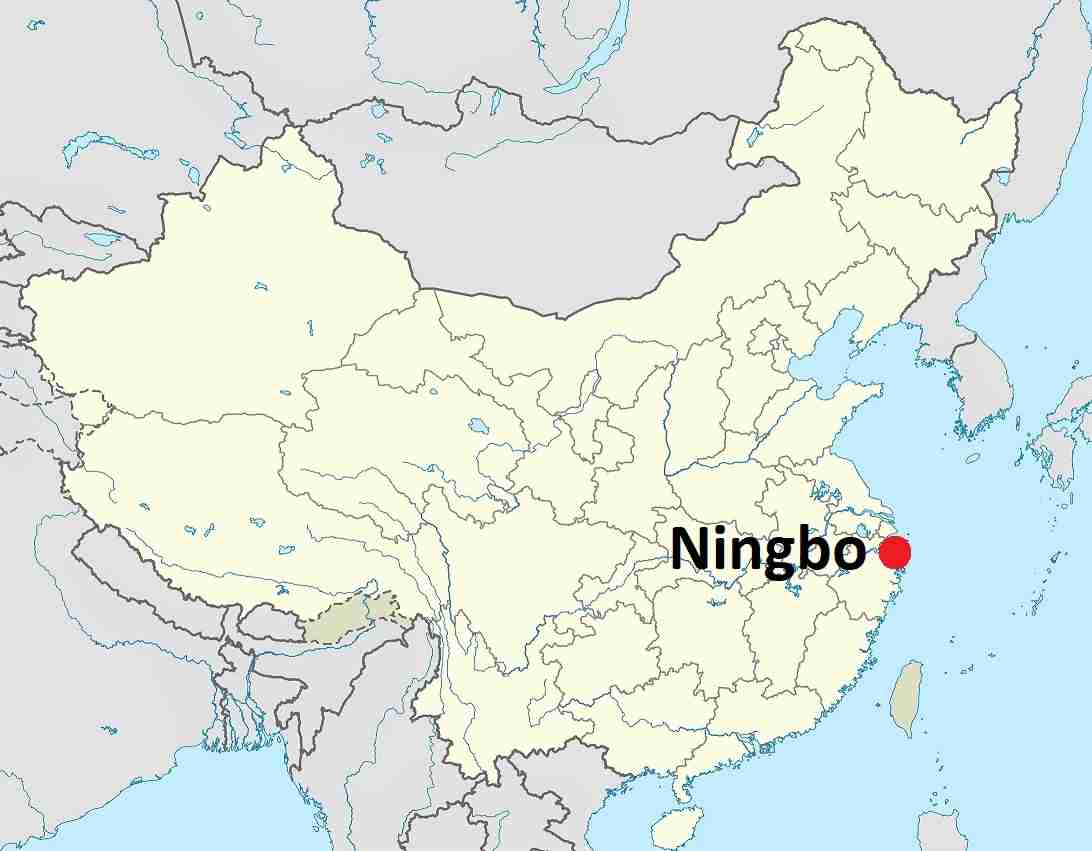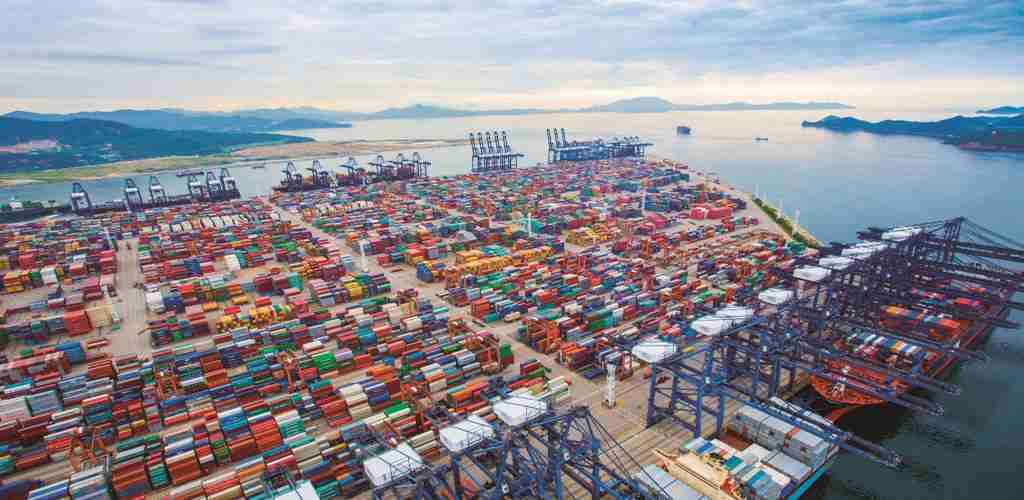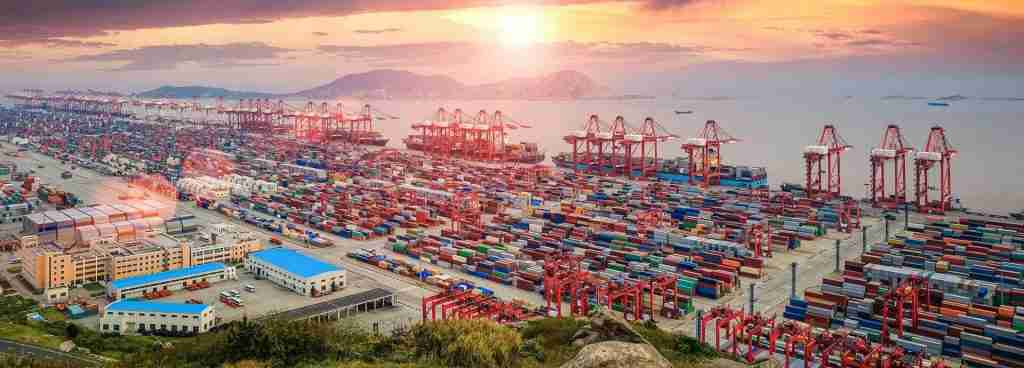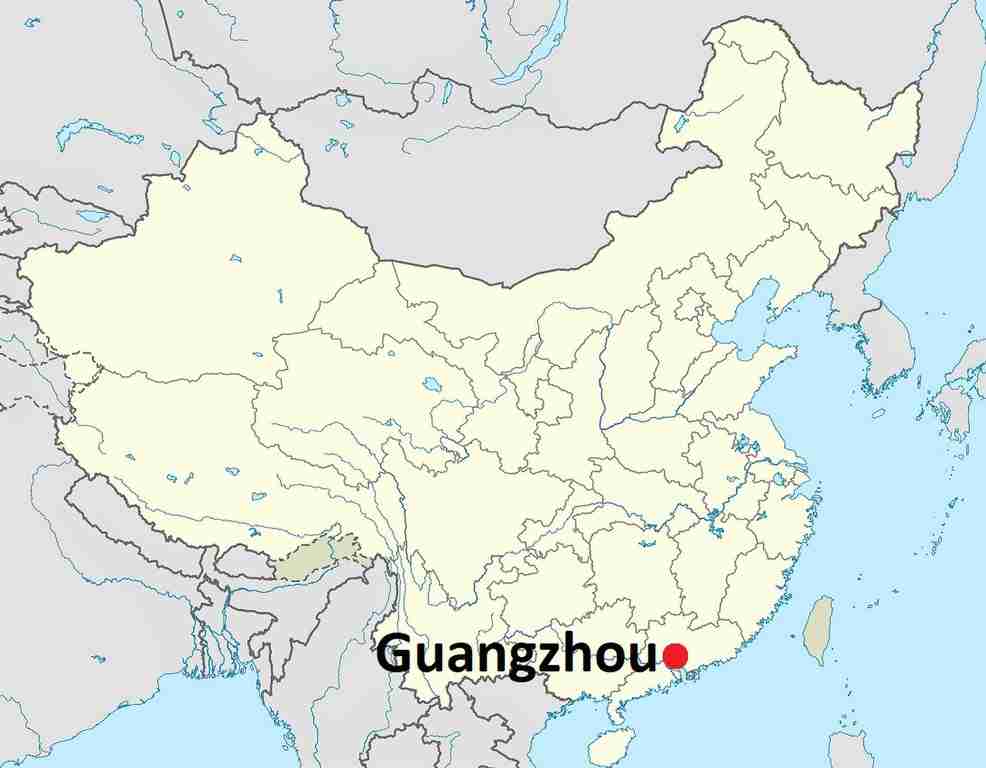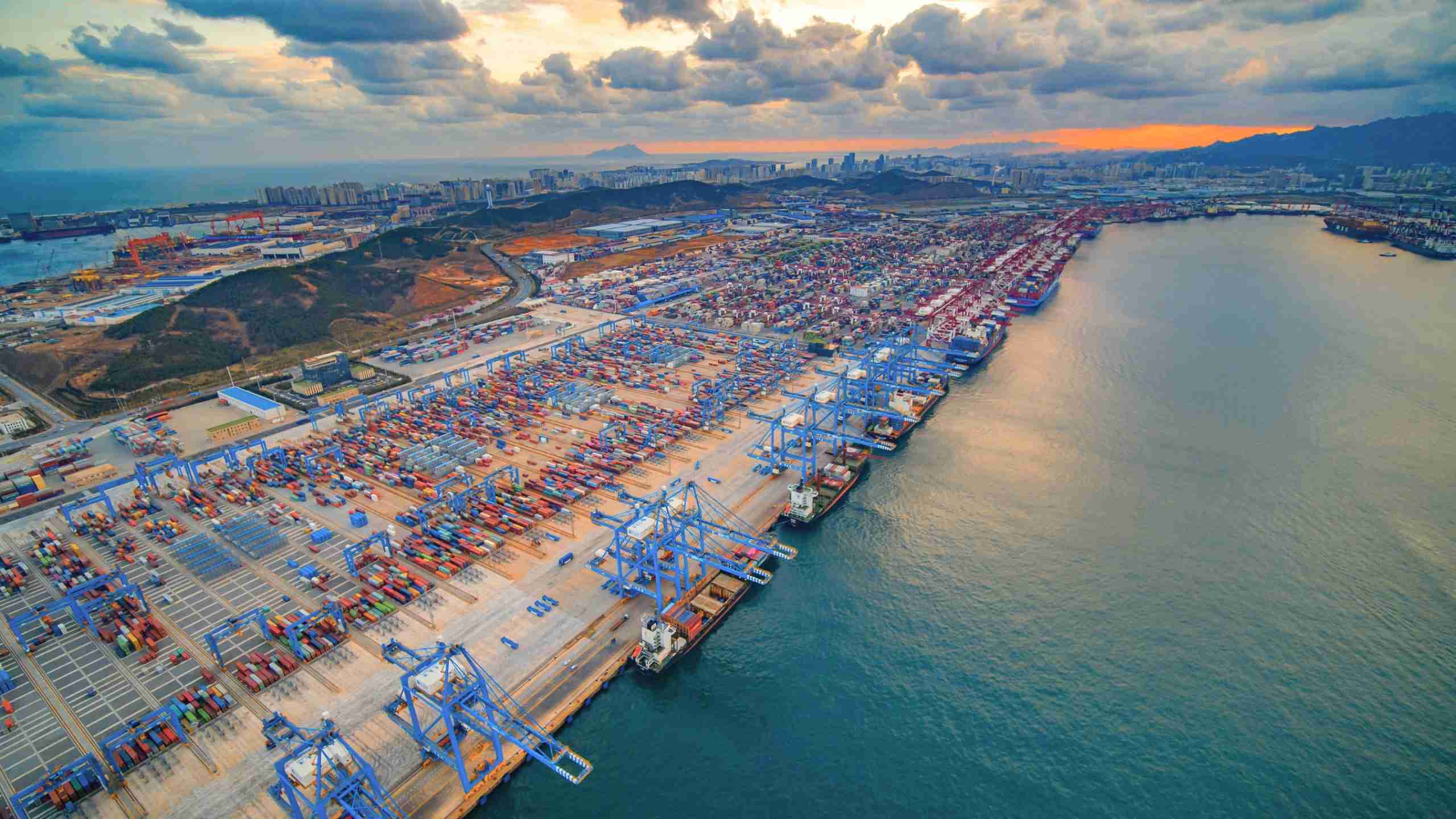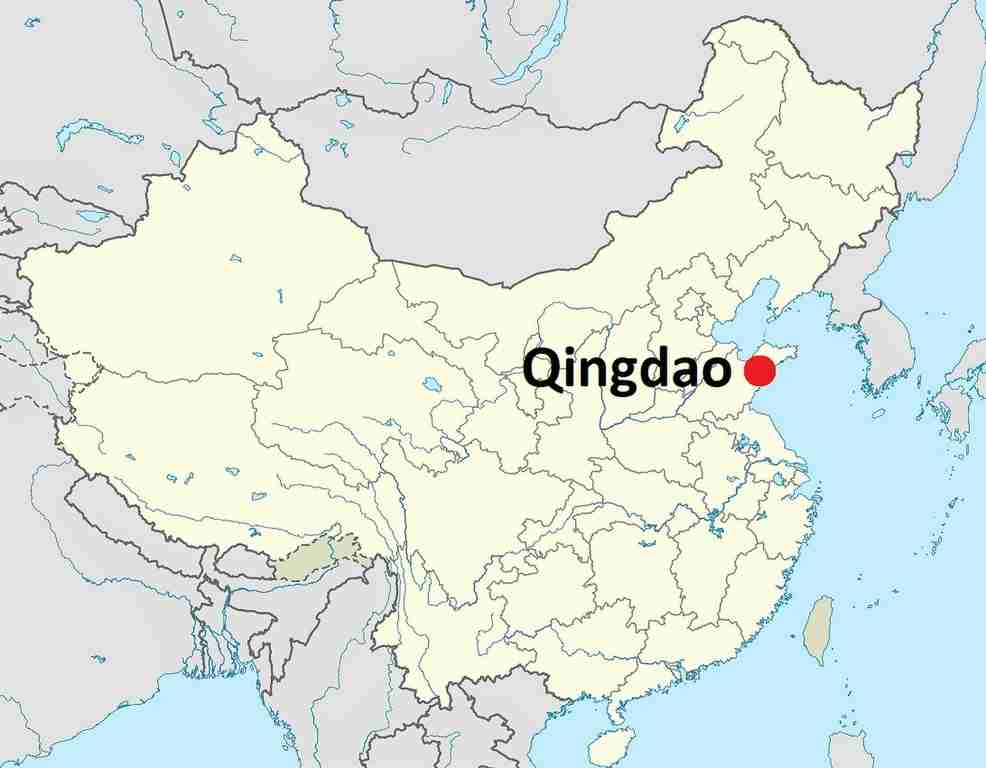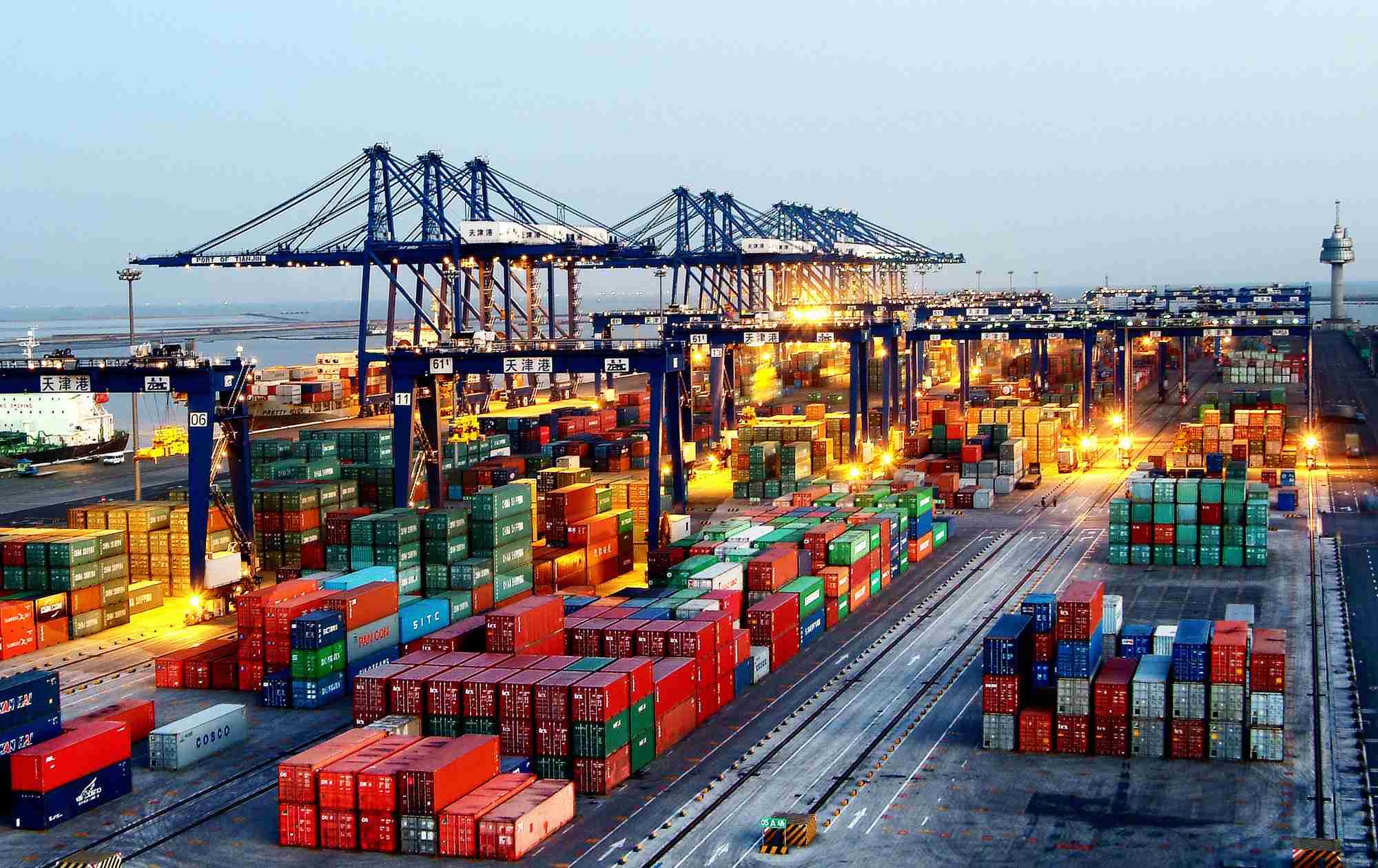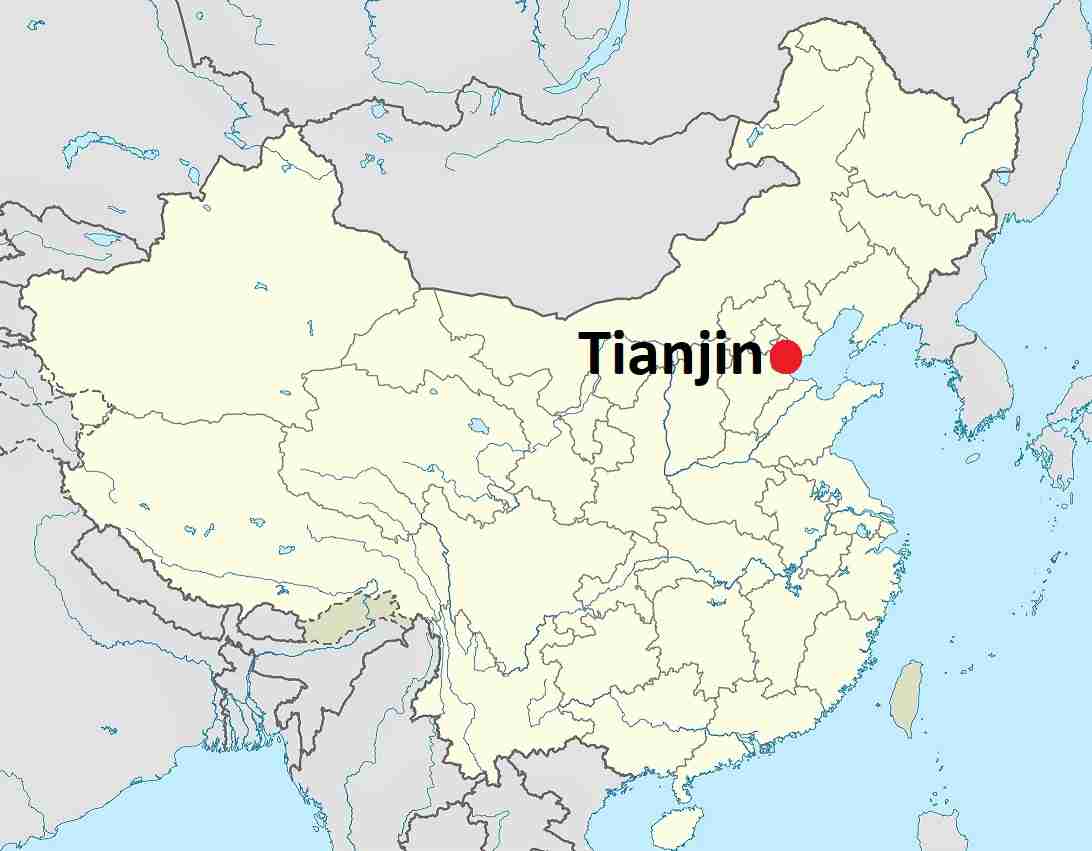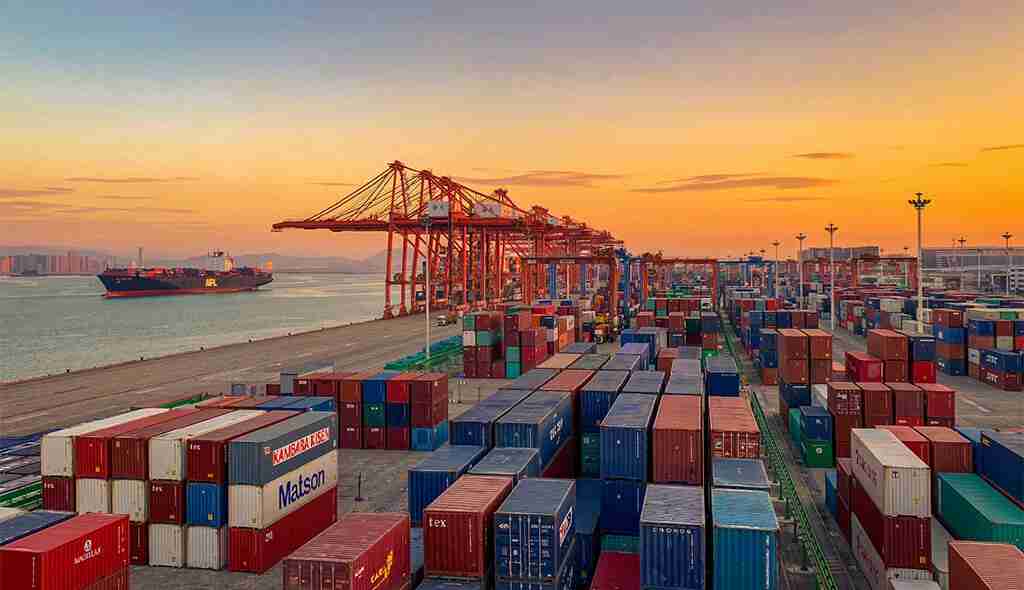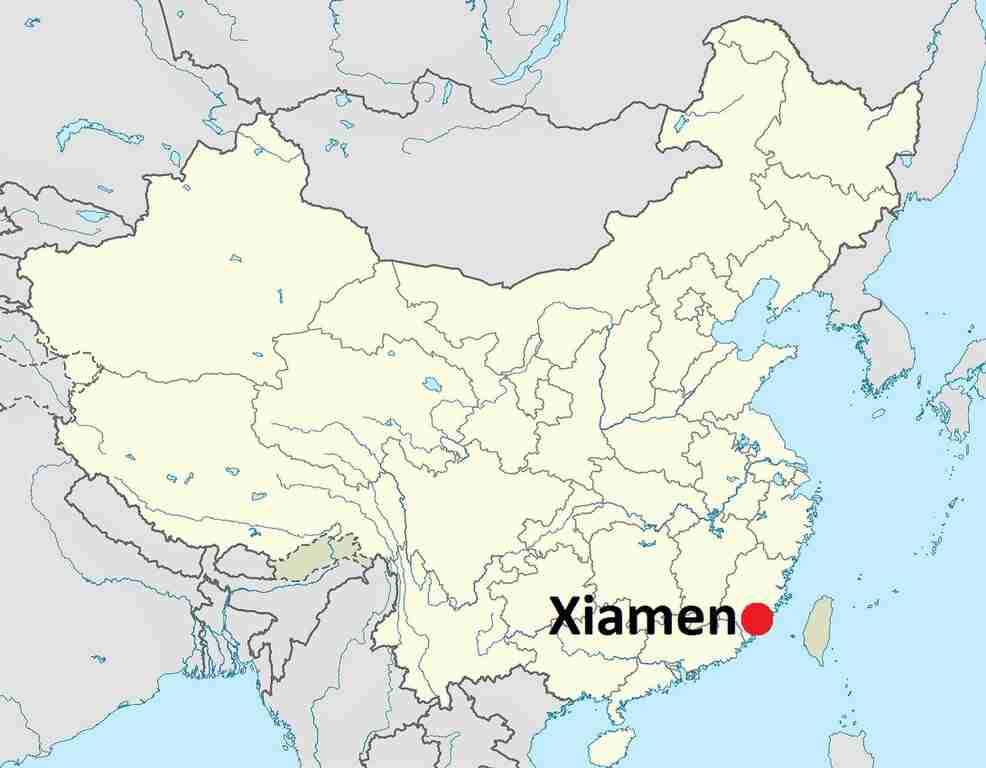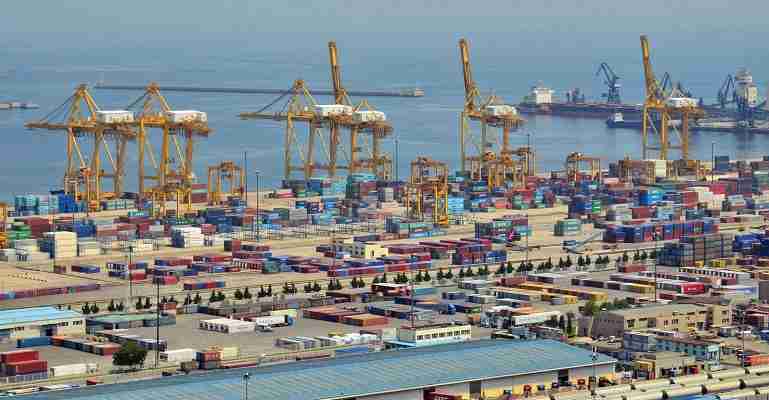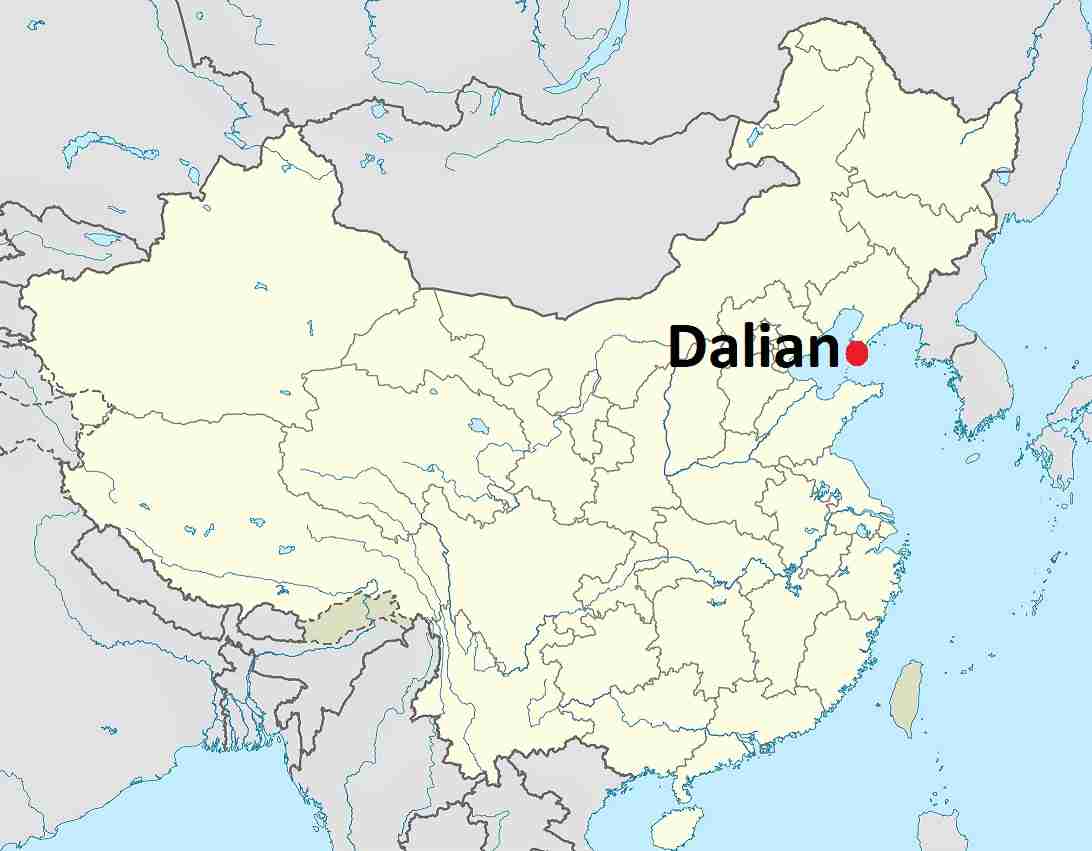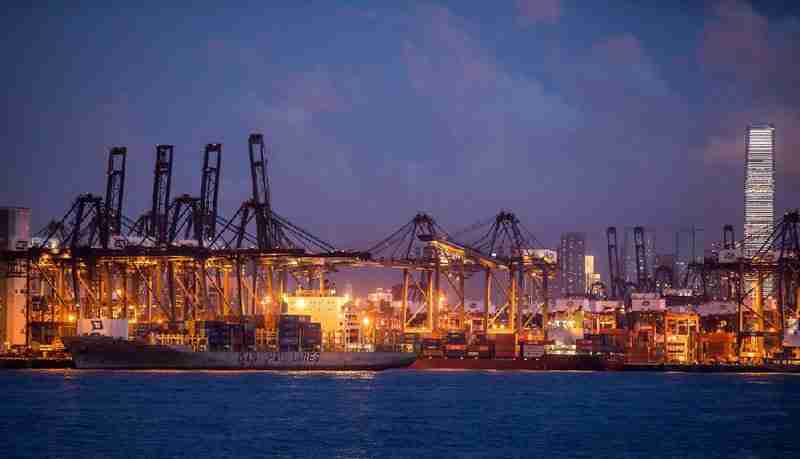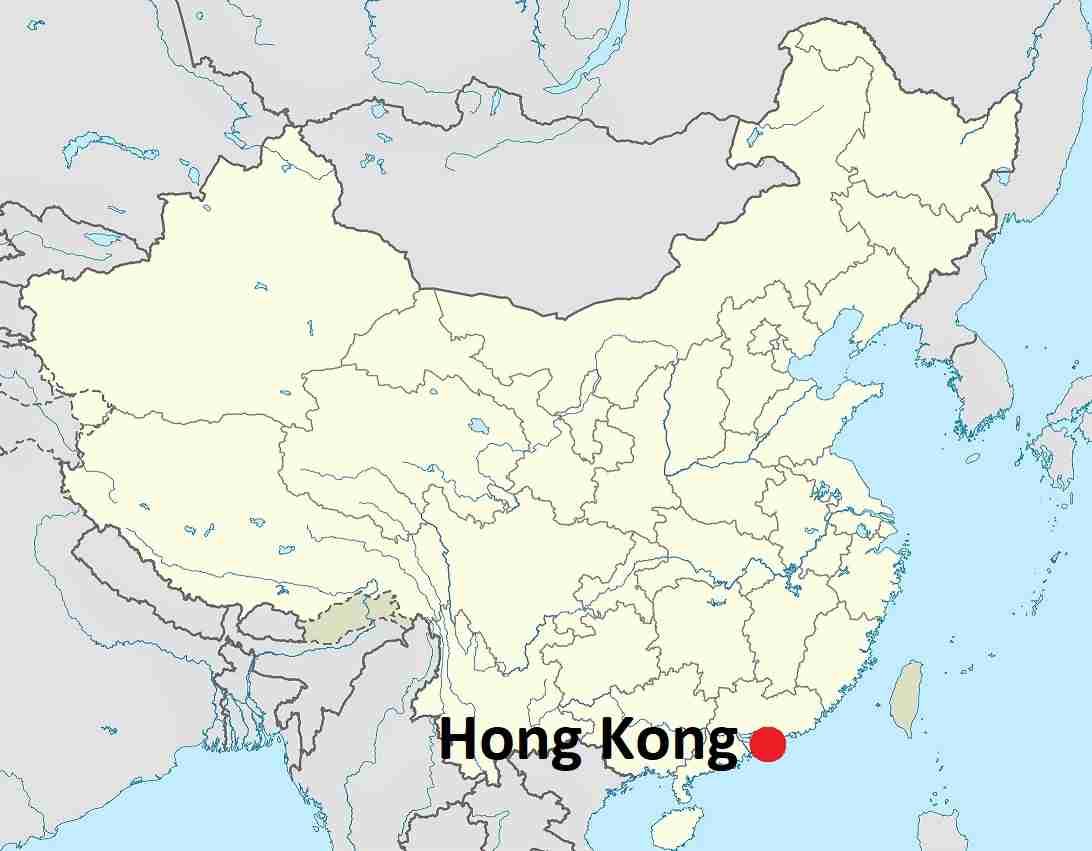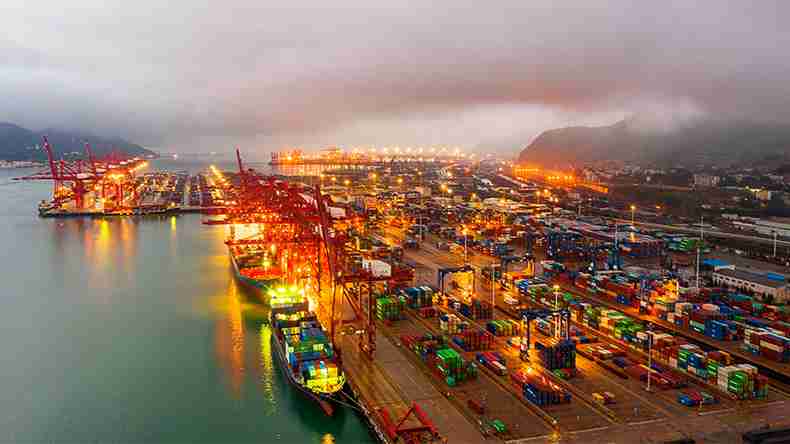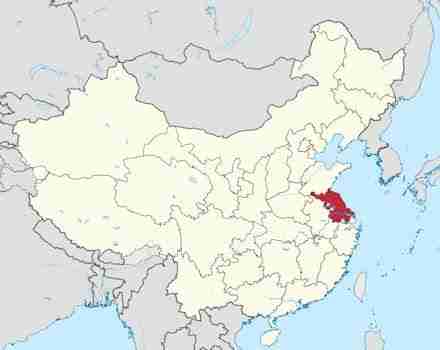How do China’s top ports, including Shanghai, Ningbo-Zhoushan, Shenzhen, and Guangzhou, manage to dominate global trade? These maritime juggernauts, renowned for their strategic locations, advanced technology, and massive cargo handling capacities, are the backbone of international commerce. Handling millions of TEUs and billions of tons of cargo annually, they exemplify China’s critical role in the global supply chain. This brief exploration delves into the significance of these ports, alongside the crucial support provided by freight forwarders like HAI International Holding, in facilitating seamless global trade and driving economic growth worldwide.
Shanghai: The World’s Busiest Port
| Port | Location | UN/LOCODE | Container Traffic (2023) | Cargo Tonnage (2019) |
|---|---|---|---|---|
| Shanghai | Shanghai Province | CN-SGH | Over 49 million TEU | More than 542,46 million tons |
Why is Shanghai Considered the World’s Busiest Port?
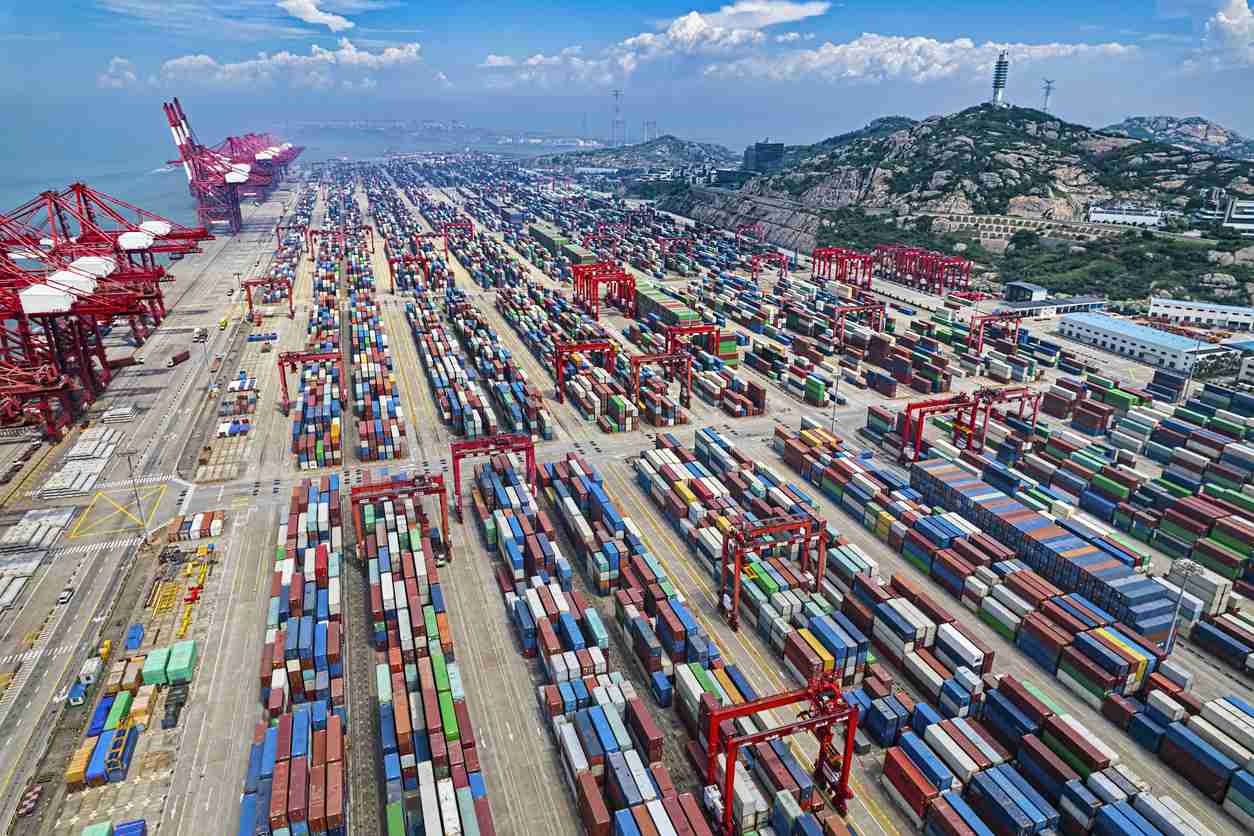
Have you ever wondered how Shanghai managed to climb the ranks to become the world’s busiest port? It’s not
just about its size or location; it’s about unparalleled efficiency, strategic significance, and a robust infrastructure that can handle the immense volume of cargo passing through its gates every year.
The Powerhouse of Global Trade
Shanghai’s port, known officially as the Port of Shanghai, isn’t just a point on the map where goods are exchanged. It’s a powerhouse driving global trade, facilitating an impressive throughput that surpasses any other port on the planet. In 2020, the Port of Shanghai handled a staggering 43.5 million TEUs (Twenty-Foot Equivalent Units), a testament to its capacity and efficiency.
Strategic Location and Cutting-Edge Technology
The success of the Port of Shanghai isn’t accidental. Its strategic location at the mouth of the Yangtze River provides direct access to China’s vast interior as well as the Pacific Ocean, making it a pivotal node in both domestic and international shipping routes. Coupled with cutting-edge technology, such as automated docking systems and AI-driven logistics, Shanghai is not just a port; it’s a glimpse into the future of maritime trade.
A Hub for International Business and Eco-Friendly Operations
Shanghai’s port is more than a bustling maritime hub; it’s a centerpiece for international business, attracting major shipping companies and logistics operators from around the globe. Its commitment to eco-friendly operations has set new standards in the industry, with initiatives aimed at reducing carbon emissions and enhancing the sustainability of its operations.
The Port of Shanghai stands as a beacon of efficiency, innovation, and sustainability in the maritime world. Its position as the world’s busiest port is not just a title; it’s a reflection of China’s central role in global trade, a status achieved through relentless improvement and strategic foresight.
Ningbo-Zhoushan: A Maritime Giant
| Port | Location | UN/LOCODE | Container Traffic (2023) | Cargo Tonnage (2023) |
|---|---|---|---|---|
| Ningbo-Zhoushan Port | Zhejiang Province | CN-NBO | Over 35.3 million TEU | More than 1.3 billion tons |
How Did Ningbo-Zhoushan Become a Global Maritime Leader?
Ever pondered what makes Ningbo-Zhoushan not just a port but a maritime giant on the global stage? It’s a combination of its strategic integration, massive capacity, and innovative approach to maritime logistics that propels it into the spotlight.
The Synergy of Two Powerhouses
In an ambitious move, the Ningbo and Zhoushan ports merged, creating a unified powerhouse with a capacity that challenges the very best. This synergy has propelled the port to handle an astonishing 27.5 million TEUs in 2020, showcasing not just its capability but its vital role in international trade.
Strategic Positioning and Infrastructure Excellence
Ningbo-Zhoushan’s success is largely attributed to its strategic positioning along the eastern seaboard of China, providing unrivaled access to the East China Sea and beyond. The port’s infrastructure is nothing short of world-class, equipped with deep-water berths that can accommodate the largest vessels afloat, the very titans of international shipping.
A Beacon of Innovation and Sustainability
What sets Ningbo-Zhoushan apart is not just its scale but its commitment to innovation and sustainability. With initiatives aimed at reducing greenhouse gas emissions and enhancing operational efficiency through smart technologies, Ningbo-Zhoushan is leading the way towards a greener and more efficient future in maritime logistics.
Ningbo-Zhoushan stands as a testament to what can be achieved when strategic foresight meets innovative execution. Its position as a maritime giant is well-earned, reflecting the port’s pivotal role in shaping the future of global trade and its commitment to pushing the boundaries of what’s possible in maritime logistics.
Shenzhen: The Technological Hub
| Port | Location | UN/LOCODE | Container Traffic (2022) | Cargo Tonnage (2019) |
|---|---|---|---|---|
| Shenzhen | Guangdong Province | CN-SZX | Over 30 million TEU | More than 195 billion tons |
Why is Shenzhen Dubbed the Silicon Valley of Hardware?
Have you ever wondered why Shenzhen is often referred to as the Silicon Valley of hardware? The answer lies in its unparalleled innovation, technology integration, and a dynamic ecosystem that supports and propels the tech industry forward.
A Nexus of Technology and Trade
Shenzhen’s port, strategically located in the Pearl River Delta, is not just a logistical hub but a nexus where technology and trade converge. With a handling capacity of over 25 million TEUs in 2020, it stands as a testament to how technology can amplify port efficiency and effectiveness.
Advanced Infrastructure Meets Cutting-Edge Tech
The infrastructure of Shenzhen’s port is a marvel of modern engineering, equipped with automated terminals and logistics systems. This cutting-edge technology not only boosts the port’s operational capacity but also significantly reduces its carbon footprint, setting new standards in sustainable port management.
Driving Innovation in Global Logistics
Shenzhen is not just a city; it’s a global innovator in logistics. Its port serves as a critical node in the supply chain, offering solutions that redefine what’s possible in cargo handling and distribution. Through smart technologies, Shenzhen is shaping the future of global trade, making it faster, more efficient, and more reliable.
Shenzhen’s port embodies the city’s spirit of innovation and its role as a technological hub. By integrating advanced technologies with robust trade capabilities, Shenzhen is not just leading China’s maritime industry; it’s setting the pace for the future of global logistics.
Guangzhou: The Ancient Maritime Silk Road
| Port | Location | UN/LOCODE | Container Traffic (2023) | Cargo Tonnage (2023) |
|---|---|---|---|---|
| Guangzhou | Guangdong Province | CN-GGZ | Over 25,5 million TEU | More than 660 million tons |
How Has Guangzhou’s Port Played a Pivotal Role in the Maritime Silk Road?
Ever curious about how Guangzhou has remained a key player on the Maritime Silk Road for centuries? It’s a blend of its rich history, strategic location, and its evolution into a modern-day maritime powerhouse that continues to influence global trade routes.
A Legacy of Trade and Culture
Guangzhou’s port, with its deep roots stretching back to the ancient Maritime Silk Road, has been a melting pot of cultures, goods, and ideas. Its enduring legacy is not just in the volume of goods it handles—over 21 million TEUs in 2020—but in its role as a bridge between the East and the West.
Strategically Positioned for Global Trade
Situated on the Pearl River, Guangzhou boasts a strategic advantage that has been exploited for millennia. Its location serves as a natural gateway not just to China’s vast interior but also to international waters, making it an unbeatable node in both ancient and modern trade networks.
Innovation and Sustainability: The Modern Silk Road
In the spirit of the ancient Silk Road, Guangzhou’s port has embraced innovation and sustainability. With state-of-the-art facilities and eco-friendly operations, it exemplifies how modern ports can balance growth with environmental stewardship, propelling the ancient trade route into the future.
Guangzhou’s port is more than just a hub of maritime activity; it’s a living history of trade, innovation, and cultural exchange. As it continues to evolve, it remains a testament to the enduring significance of the Maritime Silk Road in the age of globalization.
Qingdao: The Gateway to the North
| Port | Location | UN/LOCODE | Container Traffic (2018) | Cargo Tonnage (2018) |
|---|---|---|---|---|
| Qingdao | Shandong Province | CN-TAO | Over 18 million TEU | More than 605 million tons |
Why is Qingdao Considered the Gateway to Northern China?
Have you ever thought about what makes Qingdao such a critical gateway to northern China? It’s not just its picturesque coastal location but its strategic significance, advanced infrastructure, and robust trade links that set it apart as a key player in the maritime industry.
Strategic Location and Booming Trade
Qingdao’s port sits at the juncture of major international shipping routes, offering unparalleled access to the Yellow Sea. This strategic positioning has facilitated a trade volume of over 20 million TEUs in 2020, reinforcing its role as a vital link in the global supply chain.
Infrastructure That Matches Global Standards
With its deep-water berths, state-of-the-art cargo handling facilities, and advanced logistics services, Qingdao’s port is a model of efficiency and innovation. This infrastructure not only supports large-scale operations but also ensures seamless integration into the global trade network.
A Hub for Diverse Trade and Cultural Exchange
Qingdao is more than a port; it’s a vibrant hub of economic activity and cultural exchange. Its ability to handle diverse cargo types and facilitate international business has made it a crucial point of convergence for traders, investors, and cultures from around the world.
As the gateway to northern China, Qingdao’s port embodies the dynamism and forward-thinking approach that define the country’s maritime sector. Its strategic location, coupled with cutting-edge infrastructure, ensures its continued prominence in international trade and logistics.
Tianjin: The Northern Powerhouse
| Port | Location | UN/LOCODE | Container Traffic (2018) | Cargo Tonnage (2018) |
|---|---|---|---|---|
| Tianjin | Tianjin Municipality | CN-TNJ | Over 16 million TEU | More than 429 million tons |
What Makes Tianjin a Key Player in China’s Northern Economic Belt?
Ever wonder why Tianjin is often referred to as the northern powerhouse of China’s economy? It’s a combination of its strategic location, vast infrastructure, and economic vitality that positions Tianjin as a pivotal hub in the regional and global trade network.
Strategically Located for Optimal Access
Tianjin’s port, one of the largest in China, benefits immensely from its proximity to Beijing and serves as the primary maritime gateway for the northern region. This advantageous location allows for efficient transportation links to the interior and along the Bohai Economic Rim, making it a linchpin in domestic and international logistics networks.
A Beacon of Industrial and Technological Development
With its advanced industrial base and focus on high-tech industries, Tianjin’s economic landscape is diverse and dynamic. The port supports this growth by handling a wide range of cargo, including raw materials, manufactured goods, and technological products, showcasing a robust capacity that exceeded 16 million TEUs in recent years.
Commitment to Sustainability and Innovation
In the face of rapid development, Tianjin has made significant strides towards sustainability and innovation. The port incorporates green technologies and practices, aiming to reduce environmental impact while enhancing operational efficiency. This commitment ensures Tianjin’s role as a forward-thinking leader in the maritime industry.
Tianjin’s status as the northern powerhouse is well-deserved, thanks to its strategic importance, economic diversity, and innovative approach to port management. As a cornerstone of China’s maritime infrastructure, Tianjin plays a crucial role in shaping the future of regional and global trade dynamics.
Xiamen: The Southern Gateway
| Port | Location | UN/LOCODE | Container Traffic (2018) | Cargo Tonnage (2018) |
|---|---|---|---|---|
| Xiamen | Fujian Province | CN-XMN | Over 10 million TEU | More than 220 million tons |
Why is Xiamen Hailed as the Southern Gateway to China?
Have you ever wondered what makes Xiamen stand out as the southern gateway to China? It’s the blend of its strategic location, booming economy, and cultural richness that not only makes it a pivotal maritime hub but also a symbol of China’s open-door policy to the world.
A Strategic Maritime Hub with Global Links
Xiamen’s port, nestled on the southeastern coast of China, boasts a strategic position that offers direct sea routes to major global markets. This geographical advantage is amplified by its deep-water berths and modern facilities, which handled over 10 million TEUs in recent years, facilitating seamless international trade and logistics operations.
Economic Dynamism and Cultural Heritage
Xiamen’s economic landscape is a vibrant mix of high-tech industries, manufacturing, and service sectors, making it a powerhouse of innovation and economic growth. The city’s commitment to preserving its cultural heritage, amidst rapid development, adds a unique charm that attracts business and tourism alike.
Innovative Logistics and Sustainable Practices
The port of Xiamen is not just a gateway for goods; it’s a frontrunner in adopting innovative logistics solutions and sustainable practices. Its efforts to enhance efficiency while minimizing environmental impact set a benchmark for ports worldwide, showcasing how modernity and sustainability can go hand in hand.
As the southern gateway to China, Xiamen embodies the essence of connectivity, economic vitality, and cultural depth. Its strategic significance and forward-looking approach ensure that it remains at the forefront of facilitating China’s engagement with the global community.
Dalian: The Versatile Port
| Port | Location | UN/LOCODE | Container Traffic (2019) | Cargo Tonnage (2019) |
|---|---|---|---|---|
| Dalian | Liaodong Province | CN-DLC | Over 8,7 million TEU | More than 440 million tons |
What Sets Dalian Apart in the World of Maritime Trade?
Have you ever considered what makes Dalian such a versatile port in the maritime trade arena? It’s the unique combination of its strategic location, diverse capabilities, and innovative approaches to logistics that mark it as a standout among China’s numerous ports.
Strategic Location and Expansive Facilities
Positioned at the tip of the Liaodong Peninsula, Dalian’s port benefits from its proximity to major international shipping lanes, serving as a crucial juncture between the Pacific Ocean and the Bohai Sea. This strategic advantage is complemented by its expansive facilities, which enable the port to handle a vast array of cargo types. In recent years, Dalian has demonstrated its multifaceted operational capacity by handling over 9.77 million TEUs in 2020, showcasing its capability to manage a diverse range of cargo, from bulk and containerized goods to oil and liquefied natural gas.
Economic Engine and Gateway to the Northeast
Dalian is not just a port; it’s an economic engine that powers the entire Liaodong Peninsula and serves as a gateway to Northeast China. Its role in facilitating trade, both domestic and international, cannot be overstated. The port’s ability to adapt and expand its services has made it a critical component in the region’s economic development, particularly in sectors such as manufacturing, petrochemicals, and agribusiness.
Commitment to Sustainability and Technological Advancement
What truly distinguishes Dalian is its commitment to sustainability and technological advancement. The port has implemented cutting-edge technologies and green practices to reduce environmental impact and enhance efficiency. From automated container terminals to advanced cargo handling systems, Dalian is at the forefront of integrating technology into maritime logistics, setting new standards for ports worldwide.
Dalian’s port exemplifies versatility and innovation, positioning it as a key player in the global maritime industry. Its strategic location, diverse capabilities, and forward-thinking approach ensure that it continues to play a vital role in facilitating trade and supporting economic growth in China and beyond.
Hong Kong: The Global Connector
| Port | Location | UN/LOCODE | Container Traffic (2018) | Cargo Tonnage (2018) |
|---|---|---|---|---|
| Dalian | Hong Kong – Special Administrative Region | CN-HKG | Over 19,6 million TEU | More than 258,5 million tons |
Why is Hong Kong Considered the World’s Premier Global Connector?
Ever wondered why Hong Kong stands as the undisputed global connector in the maritime world? It boils down to its strategic location, world-class infrastructure, and the unparalleled efficiency of its port operations, making it a linchpin in global trade networks.
A Strategic Crossroads of International Trade
Nestled at the mouth of the Pearl River Delta, Hong Kong’s port leverages its geographical advantage to serve as a critical crossroads for international trade. This unique position enables seamless connections between the East and West, bolstering its status as a global transshipment hub and facilitating the smooth flow of goods across continents.
Cutting-Edge Infrastructure and Unmatched Efficiency
Hong Kong’s commitment to maintaining state-of-the-art infrastructure is evident in its sophisticated terminals, advanced logistics systems, and streamlined customs processes. These elements converge to create an ecosystem of unmatched efficiency, where cargo is handled with precision and speed. In 2020, the port of Hong Kong handled over 20.1 million TEUs, showcasing its formidable capacity to facilitate the smooth flow of a significant volume of goods. This efficiency significantly reduces turnaround times and enhances the competitiveness of global supply chains, making Hong Kong a pivotal hub in international trade.
Economic Gateway and Financial Hub
Beyond its physical attributes, Hong Kong serves as a vibrant economic gateway and a leading financial hub, offering a plethora of services that extend far beyond maritime logistics. Its robust legal system, open market policies, and strategic initiatives like the Belt and Road make it an attractive center for international business, finance, and trade negotiations.
Hong Kong’s port exemplifies what it means to be a global connector, with its strategic location, advanced infrastructure, and unparalleled efficiency setting the standard for ports worldwide. Its role as an economic and financial hub further cements its position at the heart of global trade, facilitating not just the movement of goods but the flow of capital and innovation across borders.
Lianyungang: The Eurasian Bridge
| Port | Location | UN/LOCODE | Container Traffic (2015) | Cargo Tonnage (2015) |
|---|---|---|---|---|
| Lianyungang | Liaodong Province | CN-LYG | Over 4,5 million TEU | More than 210 million tons |
Why is Lianyungang Dubbed the Eurasian Bridge?
Have you ever pondered what makes Lianyungang not just a port but the Eurasian Bridge? It’s the combination of its strategic location, pivotal role in the Belt and Road Initiative, and its multimodal transport links that establish it as a key logistical nexus between Asia and Europe.
Strategic Gateway with Historical Significance
Lianyungang’s port, positioned at the eastern terminus of the New Eurasian Land Bridge and along the northern shore of the Yellow Sea, serves as a strategic gateway for goods entering and leaving China. This unique position has historical significance, tracing back to the ancient Silk Road, and today, it plays a crucial role in facilitating trade across the Eurasian continent.
A Hub for Belt and Road Initiative
As a cornerstone of the Belt and Road Initiative, Lianyungang is at the forefront of China’s efforts to enhance global trade connectivity. This initiative has bolstered the port’s infrastructure development, leading to increased trade volumes and strengthened economic ties between Asia and Europe, showcasing its importance as a modern-day trade artery.
Innovative Logistics and Multimodal Connectivity
What truly sets Lianyungang apart is its commitment to innovative logistics solutions and multimodal connectivity. The port is not just a maritime hub; it’s a comprehensive logistics platform that integrates sea, land, and rail transport, offering a seamless link for goods moving between continents. In recent years, Lianyungang has showcased its logistical prowess by handling more than 4.5 million TEUs annually, a figure that underscores its critical role in facilitating efficient, cost-effective transportation across the Eurasian landmass. This multimodal approach not only boosts the port’s capacity but also embodies the essence of the Eurasian Bridge, ensuring it remains a pivotal nexus in global trade networks.
Lianyungang’s status as the Eurasian Bridge is well-earned, highlighting its strategic importance, role in the Belt and Road Initiative, and innovative approach to global logistics. Its continued development and investment in connectivity underscore its pivotal position in shaping the future of Eurasian trade.
China’s Ports and HAI International Holding’s Global Impact
How Do China’s Top Ports and HAI International Holding Propel Global Trade?
In the vast expanse of global commerce, China’s top ports stand as beacons of trade, efficiency, and connectivity. From the bustling docks of Shanghai to the innovative facilities of Shenzhen, and the strategic hubs of Ningbo-Zhoushan and Guangzhou, these ports are not just points on a map but pivotal gears in the machinery of international trade. Their combined efforts facilitate the movement of millions of TEUs annually, highlighting China’s indispensable role in the global supply chain.
The Critical Role of HAI International Holding
In navigating the complexities of these global trade nexuses, HAI International Holding emerges as a key player, offering expertise and logistics solutions that are as diverse as the ports themselves. Whether it’s leveraging Shanghai’s capacity as the world’s busiest port, harnessing Dalian’s versatility, or tapping into Hong Kong’s role as a global connector, HAI International Holding provides the necessary insight and infrastructure to ensure smooth transit for goods across the globe.
A Symbiotic Relationship for Global Success
The synergy between China’s ports and HAI International Holding epitomizes the dynamic nature of global logistics. It’s a partnership that not only boosts China’s economic growth but also supports the global economy, making it possible for businesses around the world to connect, trade, and thrive. As these ports continue to expand and innovate, and with HAI International Holding at the helm of logistics, the future of global trade looks not just promising but boundless.
Frequently Asked Questions About Top Chinese Ports
What Makes These Ports Stand Out in Global Trade?
The uniqueness of China's top ports lies in their strategic locations, advanced infrastructure, and immense capacity to handle cargo. For instance, Shanghai, being the world's busiest port, handles millions of TEUs annually, showcasing unparalleled efficiency. Similarly, Ningbo-Zhoushan excels in its deep-water access and combined maritime prowess, while Shenzhen is famed for its technological innovations in logistics. These ports are not just transit points but critical hubs that support the global supply chain, enhancing trade flows between continents.
How Does HAI International Holding Enhance Logistics Operations in These Ports?
HAI International Holding leverages local expertise and global networks to optimize logistics operations within these ports. By providing tailored solutions, including customs clearance, cargo handling, and multimodal transportation, HAI International Holding ensures that goods are moved efficiently and cost-effectively. Their deep understanding of the intricacies of each port, combined with cutting-edge technology, allows for seamless integration into global logistics chains, enhancing the overall competitiveness of businesses.
What Are the Benefits of Working with a Freight Forwarder Like HAI International Holding?
Working with HAI International Holding brings numerous benefits, including accessibility to a wide range of logistics services, cost efficiency through optimized routes and consolidated shipments, and time savings via expert customs and documentation handling. Clients also gain peace of mind knowing that their cargo is monitored throughout its journey, ensuring timely and safe delivery. Furthermore, HAI International Holding's expertise in navigating the complexities of international trade regulations can significantly mitigate risks for businesses.
What Makes These Ports Stand Out in Global Trade?
The distinction of China's premier ports in global trade stems from their strategic locations, high-tech infrastructure, and vast handling capacities. Shanghai, for instance, shines as the world's busiest port due to its efficiency in processing millions of TEUs annually. Ningbo-Zhoushan combines deep-water access with extensive maritime capabilities, and Shenzhen is recognized for its innovation in logistic technologies. These characteristics ensure these ports are indispensable nodes within the global supply chain, facilitating seamless trade across continents.
How Do These Ports Enhance Global Logistics Operations?
These ports contribute significantly to enhancing global logistics operations through advanced technological integration, efficient cargo handling systems, and strategic geographic positioning. They offer comprehensive services, including streamlined customs procedures and multimodal transport links, optimizing the flow of goods worldwide. Their capacity to accommodate massive cargo volumes reduces bottlenecks and improves the reliability of supply chains, making global trade more fluid and accessible.
What Are the Benefits of Utilizing Major Ports in Global Trade?
Utilizing major ports in global trade offers enhanced efficiency, reduced transportation costs, and improved market access. These ports are equipped with state-of-the-art facilities and connectivity solutions, facilitating quicker turnaround times and greater cargo throughput. Businesses can leverage these advantages to achieve economies of scale, enhance their competitiveness, and expand their reach to new markets, ultimately leading to increased profitability and growth opportunities.
How Are Logistics Challenges Addressed in These Major Ports?
Logistics challenges in these major ports are addressed through a combination of innovative technologies, strategic planning, and collaborative efforts with stakeholders. Real-time tracking systems, automated handling equipment, and AI-driven logistics solutions are employed to anticipate and mitigate potential disruptions. Furthermore, these ports engage in continuous improvement initiatives to enhance their resilience against operational challenges, ensuring the uninterrupted flow of goods.
Can Smaller, Less-Known Ports Be Effective in Global Trade?
Yes, smaller, less-known ports can play a significant role in global trade by offering niche advantages, such as reduced congestion, personalized services, and access to specific regional markets. These ports often serve as strategic alternatives for businesses looking to bypass busier hubs or tap into localized supply chains. By diversifying port usage, companies can achieve more flexible and cost-effective logistics solutions, tailored to their unique operational needs and market demands.

